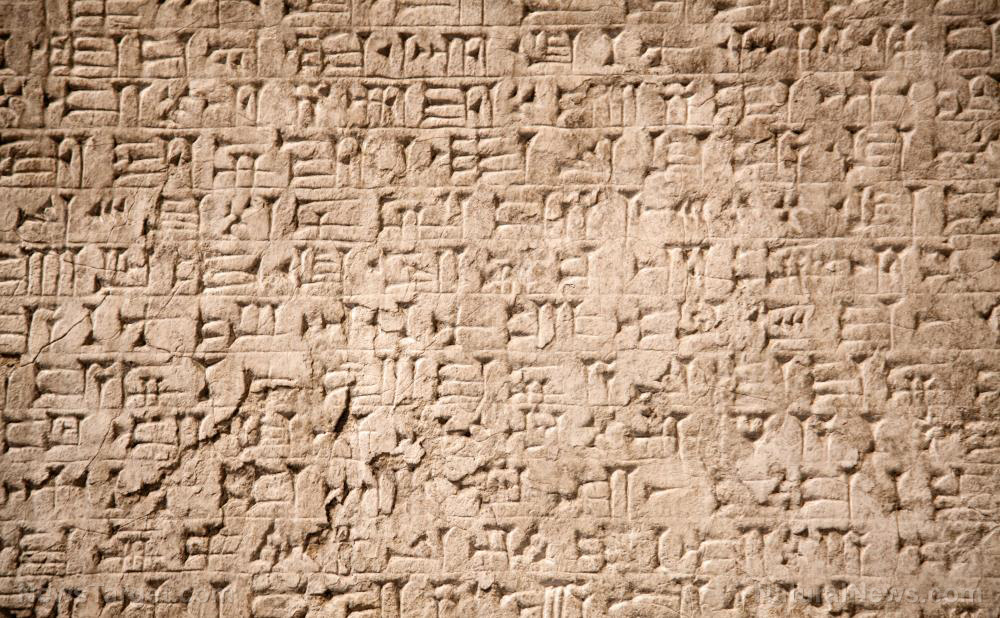Experts discover 30 “curse tablets” in 2,500-year-old well in Athens
11/26/2021 / By Matthew Davis

Thirty lead tablets that called upon “the gods of the underworld” to curse the dead are found at the bottom of a 2,500 year-old well in Athens. Discovered in the area of Kerameikos, ancient Athens’ main burial ground, these curses were ritual texts usually scratched on small lead objects.
“The person that ordered a curse is never mentioned by name, only the recipient,” said Dr. Jutta Stroszeck, director of the Kerameikos excavation on behalf of the German Archaeological Institute in Athens.
Before the discovery of the 30 specimens in the 32-foot well, dozens of curses from the classical period (480-323 B.C.) had been found mainly in tombs of dead people who died in an untimely manner and were therefore thought suitable to carry the spell to the underworld.
There was good reason for the transition of ill-will from graves to wells in ancient Athens. The “ritual texts” were commissioned by the living to curse their rivals who died in an untimely manner, as their souls were said to be “unquiet” and carried the messages with them to the afterlife.
The hexes were etched in lead and originally nailed to the deceased coffin, but those looking to cause harm had to find other ways to cast spells following a ban on the black arts.
Archaeologists believe the next best way would be to toss them in a well, as people may have thought the messages would find their own way to the underworld.
Experts believe that there were four reasons to curse the deceased: to win a lawsuit, to succeed in business, to win athletic competitions and for general matters of love and hatred.
The well is part of a first century B.C. bathhouse that was first excavated in 2016. Four tablets were uncovered at the time. The well was dedicated to a water nymph. “Water, and in particular drinking water, was sacred,” noted Stroszeck said. “In Greek religion, it was protected by nymphs, who could become very mischievous when their water was treated badly.”
The 30 new tablets have been documented using reflectance transformation imaging, a digital technique that enables even the smallest inscriptions on lead to be read. The archaeologists hope to ultimately learn the name of the nymph, the nature of the curses and whether the targets of the hexes were any of the famous Athenians living in the city during the late fourth century B.C.
Excavations unearthed 6,500 burials since 1913
The excavations unearthed about 6,500 burials since 1913. The Kerameikos graves from the Classical period were ornate, marked with stele, reliefs, sculpted animals or marble vases. Grave markers in Hellenistic times were much simpler. (Related: Buried treasure: Gold and precious gems uncovered from a 5th century burial site in Czech Republic.)
In addition to the spells, experts also found other items such as drinking vessels, wine mixing vessels, clay lamps, cooking pots, special broad-mouthed clay pots used to draw water, wooden artifacts including a trinket box, a scraper used by potters, a wooden pulley, part of the drawing mechanism of the well, a number of bronze coins and organic remains like peach pits.
Black arts became taboo in the area and with the new law in place, curse tablets were no longer permitted on tombs.
By the last years of the fourth century B.C., those wishing ill-will on others had to find other ways to contact the underworld, Stroszeck explained.
A professional curse writer was hired to create the tablets, which were then folded and pierced with an iron nail. Before the ban on the black arts, the curse would be nailed into the coffin with hopes that the soul would take it with them to the underworld.
Follow Artifacts.news for more news and information related to newly discovered artifacts.
Sources include:
Tagged Under: bathhouse, black arts, coffin, decease, deceased, excavation, gods, graves, harm, hate, hexes, logic, nymphs, public, science, soul, spells, underworld
RECENT NEWS & ARTICLES
COPYRIGHT © 2017 ARTIFACTS NEWS




















